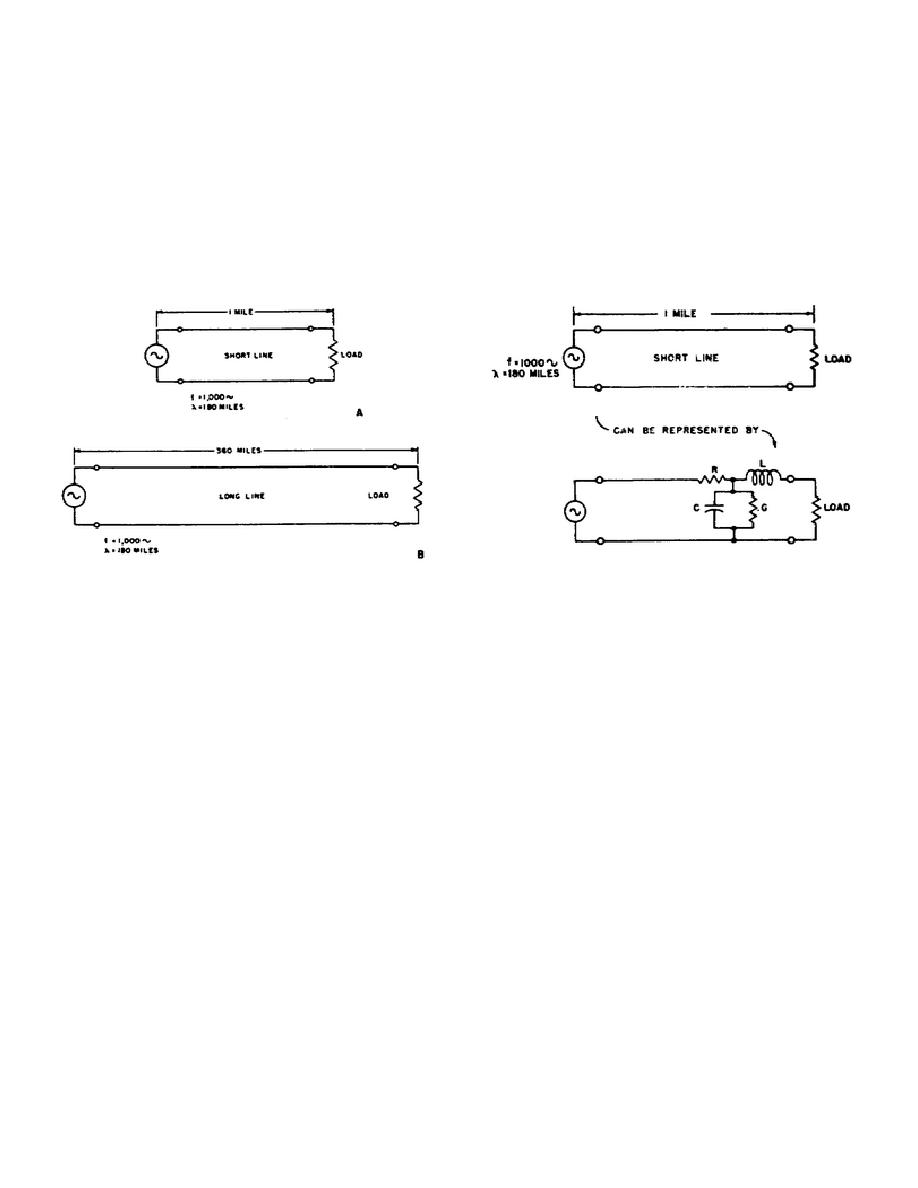
velocity of propagation of 60,000 miles per second is 1/60 of a wavelength electrically. Although both lines, or pairs, are
1 mile in physical length, the slower circuit is electrically three times as long as the faster circuit. Note that electrical
length as defined here is based on phase change per unit length, in contrast to electrical length based on attenuation per
unit length.
(2) Long lines. A long line may be defined as one in which the length of the line is approximately equal to, or
longer than, the wavelength of the transmitted signal. B, figure 53A, represents a line that is electrically long, for the line
is 360 miles in length and it carries a 1,000 hertz signal having a wavelength of 180 miles. As the wave travels along this
line, two complete voltage and current waves exist on it at any single instant of time. Under different circumstances, the
same line may behave either as an electrically short or an electrically long line. For example, if the line shown in A,
figure 53A, is energized by a signal having a frequency of 200,000 hertz, corresponding to a wavelength of .9 mile, it is
FIGURE 53B. Short Line and Its
FIGURE 53A. Short and Long Line.
Equivalent Circuit (Lumped)
considered (and behaves like) a long line; or, if the line shown in B is energized by a signal having a frequency of 60
hertz, corresponding to a wavelength of 3,000 miles, it is considered (and behaves like) a short line.
b. Line parameters.
Transmission lines, because of their basic structure, possess certain
line parameters.
These parameters, commonly called constants, comprise series resistance, R, series
inductance, L, shunt capacitance, C, and shunt-leakage conductance, G--all these with respect to
119



 Previous Page
Previous Page
